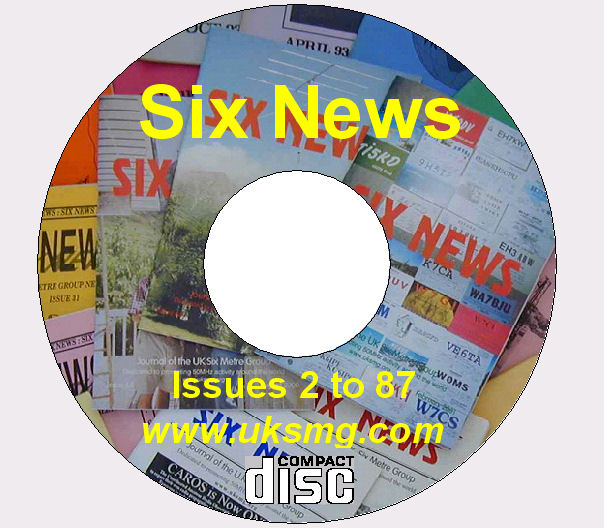

home > archive > the history of 6m > 50 years of 50 MHz

Thanks to all of our authors since 1982!
50 Years of 50 MHz - Ken Willis, G8VR |
|
|
Ken Ellis, G5KW and MD5KW
In 1946, serving with 3GHQ Signal Regiment at Fayid in the Suez Canal Zone, Ken was in control of a military communication network known as the Army Wireless Chain and he had several radio amateurs on his staff. Monitoring 49 MHz television signals from India, together with harmonics of service and commercial stations, in his spare hours led him to conclude that there was potential for long distance propagation on six metres along a north-south path across the equator. By now, GHQ Middle East had begun to allocate amateur radio licences
and calls and Ken received the call MD5KW, which later became so well-known
among the 50 MHz fraternity. At the time, operators in a number of countries
around the world (notably the USA) were active on the 50 MHz band. But television
demands still meant that UK amateurs were To investigate the equatorial path on 50 MHz, MD5KW built a station for 28, 50 and 58.5 MHz. From early 1946 he transmitted a beacon signal on 50 MHz from a four-element directional array which beamed alternately north and south, changing at thirty-minute intervals driven by a modified prop-pitch motor. Less-ancient readers may not know that these motors, which as their name suggests were used to vary the pitch of aircraft propellers during flight, were freely available as surplus items after the war and easily converted into antenna rotors. The MD5KW project attracted considerable interest from various military units in the area, to the extent that the RAF loaned a cabin and a 50-foot wooden tower for the antenna, close to the Officers' Mess. Initially, the receiving end of the project was located a few miles away. Ken has not told me how he kept a continuous watch on 28.100 MHz for cross-band calls to report reception of his six-metre beacon signal. Perhaps he arranged a `training' programme to assign all signalmen of the 3GHQ Signal Regiment to man the station on a shift basis! Up to the autumn of 1947 several reports of reception of the beacon had been received from Europe and South Africa and later from German stations. Nothing was heard in the UK until October 19th when it was copied by G5BY in Devon who, lacking a 50 MHz licence, could only reply on 28 MHz. As mentioned in `A Bit of History' (Six News 67) great efforts were being made in the UK at this time to obtain a 50 MHz permit for G6DH to allow him to make the first transatlantic contact on the band. This was finally granted on November 5th 1947 and he made the contact with W1HDQ the same day. Two days later G6DH worked MD5KW two-way on six metres. Here is how Ken described the moment: "I was on parade with my squadron at 10.00 am local time for an Annual Review of the Regiment by the Chief Signal Officer. An orderly informed the adjutant that Major Ellis was wanted urgently on the telephone to speak to the Receiving Station. I asked permission to leave the parade and went to the Officers' Mess. Not knowing what to expect, I was told that G6DH had been receiving my six-metre beacon for the past 20 minutes at strength 599. I quickly went outside to the ham shack and started calling. G6DH came back, reporting my CW as 599. His phone was S9 plus 20 dB." I understand that in the Mess that evening, when the Chief Signal Officer learned the content of the urgent message which had taken Ken from the parade, he was fully appreciative of the significance of the event. He was apparently aware that, to paraphrase a comment attributed to Bill Shankley the late Liverpool FC manager, "Six Metres isn't a matter of life and death-it's much more important than that!" By today's standards, the equipment at MD5KW was very basic. Only the receiver, a Hallicrafters S27, was a piece of commercial equipment - one of the few available receivers that could tune to VHF frequencies. We didn't know much about noise figures in those days but I would be surprised if it was better than 6 dB.
Footnote: On November 5th 1947, following a day's cross-band operating, G5BY built a complete six-metre transmitter overnight, finishing it at 0400 hours! There is much more to tell about G5KW and other six-metre early-birds.
UKSMG Six News issue 69, May 2001 |
the early history of 6m
six in fifty-seven
down memory lane
6m history
historical 6m
rigs
6m history by G6DH
50yrs of 50megs
pt2
50yrs of 50megs pt3
50yrs of 50megs pt4

